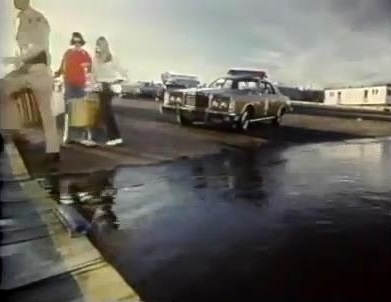The
Brujo
Kung
Fu
Emilio
Fernandez is the brujo,
terrorizing a village in Mexico from his lair in a cave. Because he is
believed, the villagers die at his whim, all by pushing pins into a doll and
the like.
Caine
remembers a magus of his childhood, “I can cure any sickness, converse
with the dead, confound a thousand masters!” The
grasshopper became his disciple and lost interest. A curse followed,
the same one that killed the previous disciple.
The
shadow of a cross falls upon Caine at the appointed hour, “reflecting the
evil back to its source”. The brujo dies, not he.
the force of evil
tales
of the unexpected

Ambulance view of the disaster, an observer. “Goodbye, Mr. Jakes,”
Teddy.
From
Quinn Martin, an analysis of Cape Fear
(dir. J. Lee Thompson) as excessive, intrusive, all-pervading nightmare, a sublime effect of Nabokov’s Russian play The Event.
William
Watson is the nemesis (cf.
“Goodnight Baby—Time to Die!”, dir.
Alf Kjellin for Hawaii
Five-O).
Not
necessary to show the horses, only the flaming stable, and then, in a young
girl’s dreaming mind, the effect that it produces, “a man... a
leg... his face” revolving in hell.
The
remote suggestion of LeRoy’s The
Bad Seed is at once borne out in the script.
Watson,
who sometimes avails himself of a resemblance to Steve McQueen, gives a good
impression of James Coburn in this part.
Beautifully
transposed to a place out West called Desert Wells (cinematography Paul
Lohmann). A masterful variant by Robert Malcolm Young worthy of The Alfred Hitchcock Hour conveys a kind
of hopeful desperation (cf.
Wellman’s Lafayette Escadrille)
and prepares the uneasy conclusion.
Night Cries
Birth and the loss of a child. Psychological
reaction, defined by dreams and nightmares.
Government-funded
dream analysis (sleep studies, REM awareness, etc.). Confrontation of
Puritanical ethic in past, successful analysis (the sleeper is a lost child).
Confrontation with the present, kidnapping of the baby in
financial transaction by maternity nurse, childless.
Such
a précis, reduced to a “meremost minimum”, conveys the stature of
the work.
The Mountain Men
The
o’nery Blackfeet
guard a legendary lake brimming with beaver, men wear silk hats now and
don’t need ‘em, scarce anyways.
“Takes
place in that part of the Old West that never changes,” reported Janet
Maslin (New York Times).
It
didn’t make much sense to Variety either, “a limp
feature”.
Halliwell’s
Film Guide found
“no possible interest.”
Don’t Go to Sleep
The
title gives from Goya a warning little analytical tale in which the loss of a
daughter to envy and mischance leads to a horrible reaction of guilt that wipes
out nearly all the remainder.
This
has its amusing side, no doubt about it.
A
great study of childhood fears and fancies, another of great sorrows in family
life, yet another of the psychologist and his collection of old toy banks, lots
of great studies make up the fabric of the film.
Kung Fu
The
film is founded on the central joke of the series,
Kwai Chang Caine is the killer of the royal nephew.
Revenge
has been taken on the Shaolin temple by the royal
nephew’s father, no master is left save Caine.
An
unusual turn in the proscribed opium trade has the stuff processed in California
for shipment to China in coffins, this aspect of the
drama is of great interest, also the evil Manchu’s version of Greek fire
and so forth.
Caine
had a son at that time and did not know it, the boy
has been brought up as an assassin.